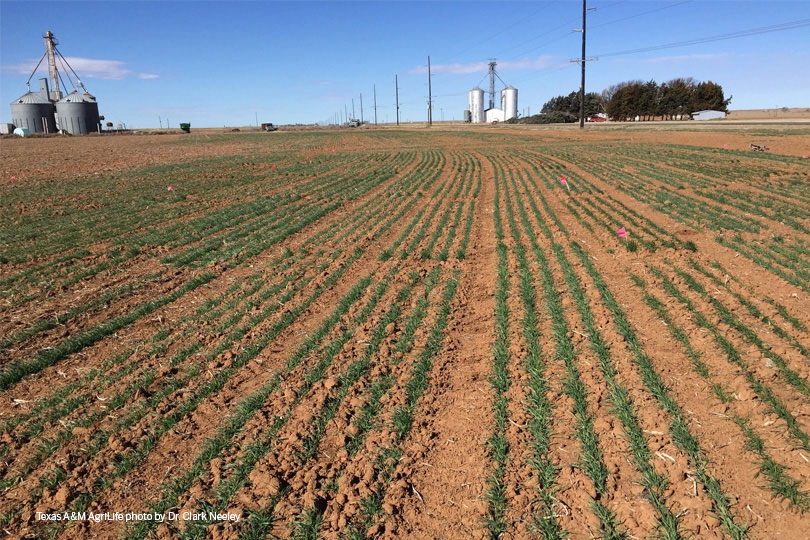By Justin Walker
Communications Specialist
More acreage in Texas could be planted in barley as Texas A&M AgriLife researchers continue to evaluate the crop as a grazing alternative for beef and dairy cattle.
Barley is commonly used for malting and as a feed source for animals.
Dr. Clark Neely, Texas A&M AgriLife Extension Service state small grains and oil seed specialist, said it can also be used as a forage crop for grazing and silage in Texas.
“Forage variety trials around the state indicate barley is very competitive with other small grains for yield potential,” Neely said. “We are currently screening Oregon State University breeding material under several Texas environments to identify the best adapted lines for future co-varietal release.”
Neely noted that barley offers several advantages over other cool-season forages, including a greater resistance than wheat to the Hessian fly, a pest in Central and South Texas.
The study began in 2014 with Neely and his research team evaluating more than 800 barley lines. From that initial evaluation, 150 lines were selected to be further studied based on characteristics, such as disease resistance and grain production. Those lines were tested during the 2016 and 2017 growing seasons in College Station, McGregor, Comanche, Brady and Dimmitt.
Winter barley has a similar growing season to winter wheat. The crop is planted from mid to late fall and is harvested in spring for forage. Some farmers recommend plating later than wheat in the fall if the crop is being grown for silage.
Neely noted that when the top early season forage and silage producing lines were identified for each environment, no barley lines ranked in the top five for either forage or silage yield in any location.
“We might find it difficult to select a single line for statewide adaptation or for both grazing and silage,” Neely said, while also noting the trials help identify which varieties perform best in various regions of the state.

